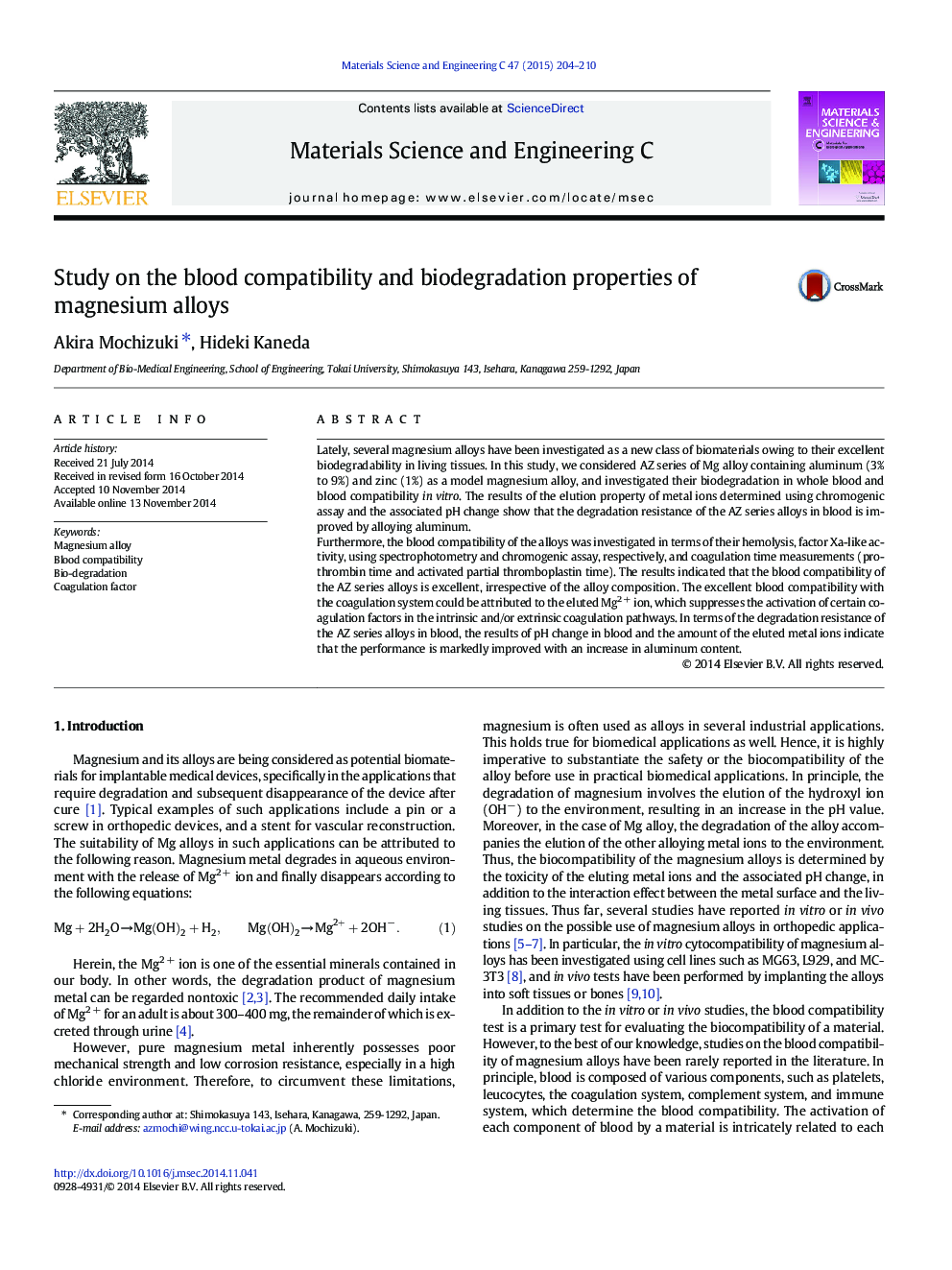| Article ID | Journal | Published Year | Pages | File Type |
|---|---|---|---|---|
| 1428394 | Materials Science and Engineering: C | 2015 | 7 Pages |
•The biocorrosion and blood compatibility of Mg–Al–Zn alloys were investigated.•The degradation resistance in blood is markedly improved by alloying aluminum.•The blood compatibility is excellent, irrespective of the Mg alloy composition.•The excellent blood compatibility observed can be attributed to the eluted Mg ion.•Mg alloys can be regarded a potential biomaterial in contact with blood.
Lately, several magnesium alloys have been investigated as a new class of biomaterials owing to their excellent biodegradability in living tissues. In this study, we considered AZ series of Mg alloy containing aluminum (3% to 9%) and zinc (1%) as a model magnesium alloy, and investigated their biodegradation in whole blood and blood compatibility in vitro. The results of the elution property of metal ions determined using chromogenic assay and the associated pH change show that the degradation resistance of the AZ series alloys in blood is improved by alloying aluminum.Furthermore, the blood compatibility of the alloys was investigated in terms of their hemolysis, factor Xa-like activity, using spectrophotometry and chromogenic assay, respectively, and coagulation time measurements (prothrombin time and activated partial thromboplastin time). The results indicated that the blood compatibility of the AZ series alloys is excellent, irrespective of the alloy composition. The excellent blood compatibility with the coagulation system could be attributed to the eluted Mg2 + ion, which suppresses the activation of certain coagulation factors in the intrinsic and/or extrinsic coagulation pathways. In terms of the degradation resistance of the AZ series alloys in blood, the results of pH change in blood and the amount of the eluted metal ions indicate that the performance is markedly improved with an increase in aluminum content.
